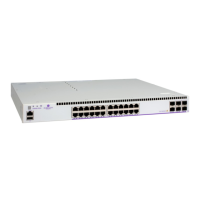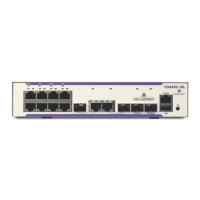VPLS Service Overview
Page 250 7210 SAS M Services Guide
a. The PE router will encapsulate this packet in the appropriate MPLS header and transport it
across the core network to the remote 7210-C.
3. 7210-C (Figure 36)
a. 7210-C associates the packet with the VPLS instance based on the VLAN tags in the re-
ceived packet.
b. 7210-C learns the source MAC address in the packet and creates an entry in the FIB table
that associates the MAC address to the access uplink porton which the packet was received.
c. The destination MAC address in the packet is looked up in the FIB table for the VPLS in-
stance. Again, there are two possibilities: either the destination MAC address has already
been learned (known MAC address) or the destination MAC address has not been learned
on the access side of 7210-C (unknown MAC address).
d. If the destination MAC address has been learned by 7210-C, an existing entry in the FIB
table identifies the local access port and the IEEE 802.1Q tag (if any) to be added before
sending the packet to customer Location-C. The egress Q tag may be different than the in-
gress Q tag.
e. If the destination MAC address has not been learned, 7210 will flood the packet to all the
access SAPs that are participating in the service.
